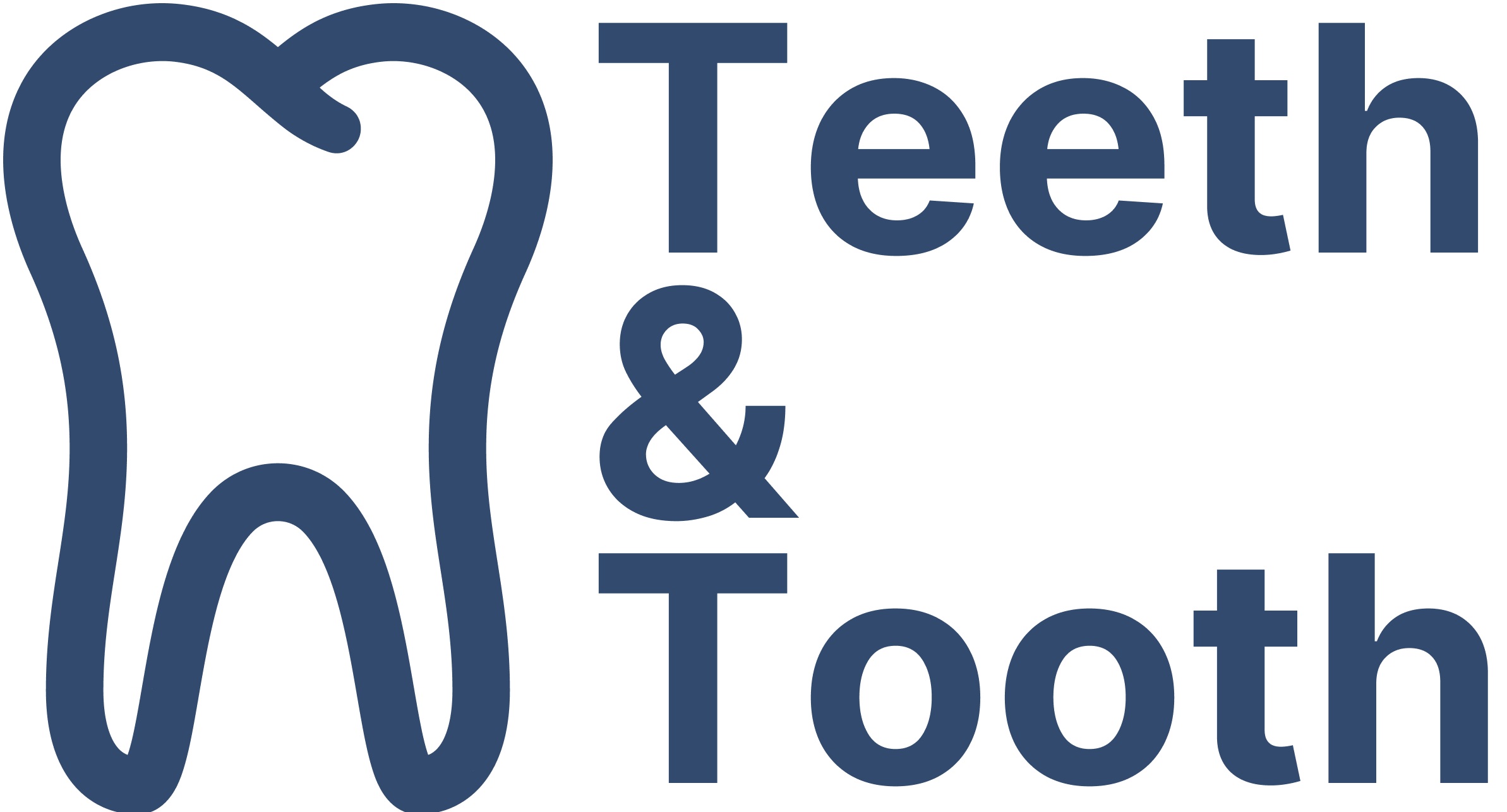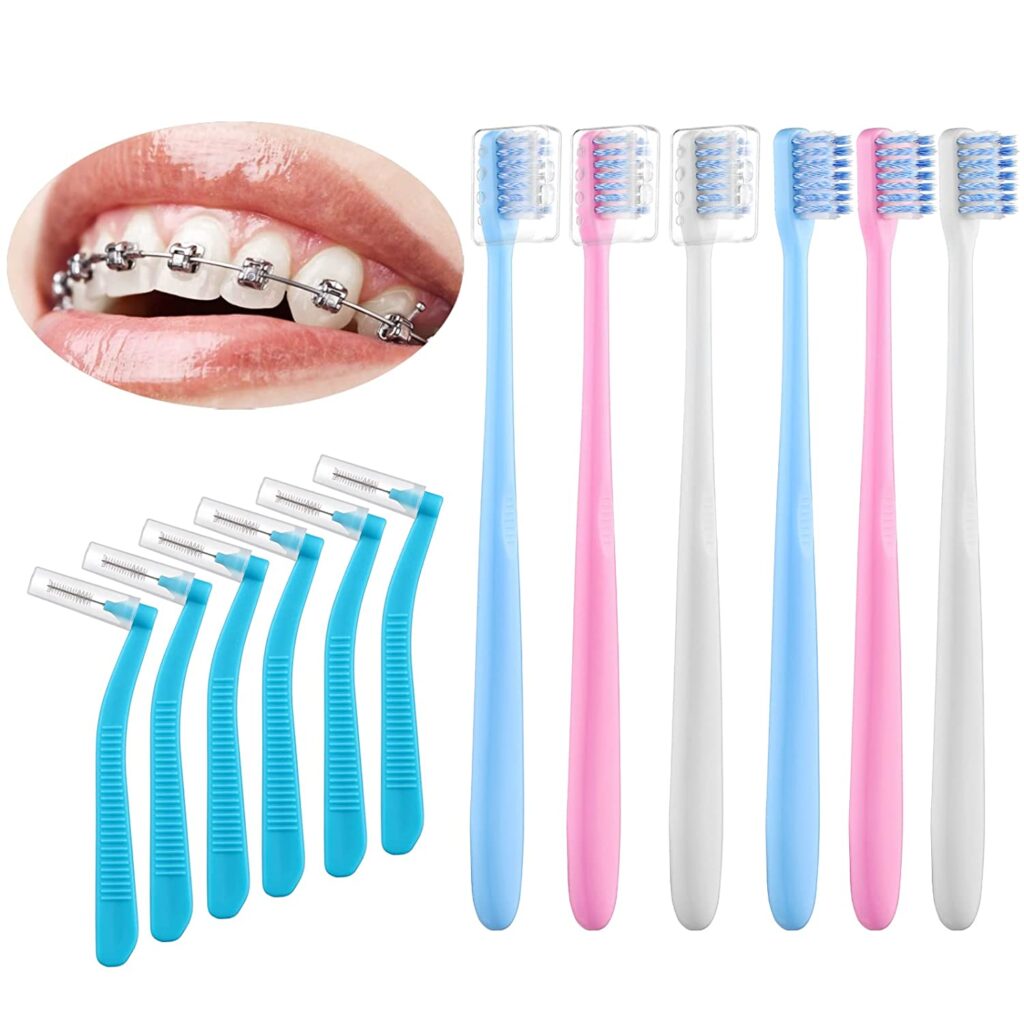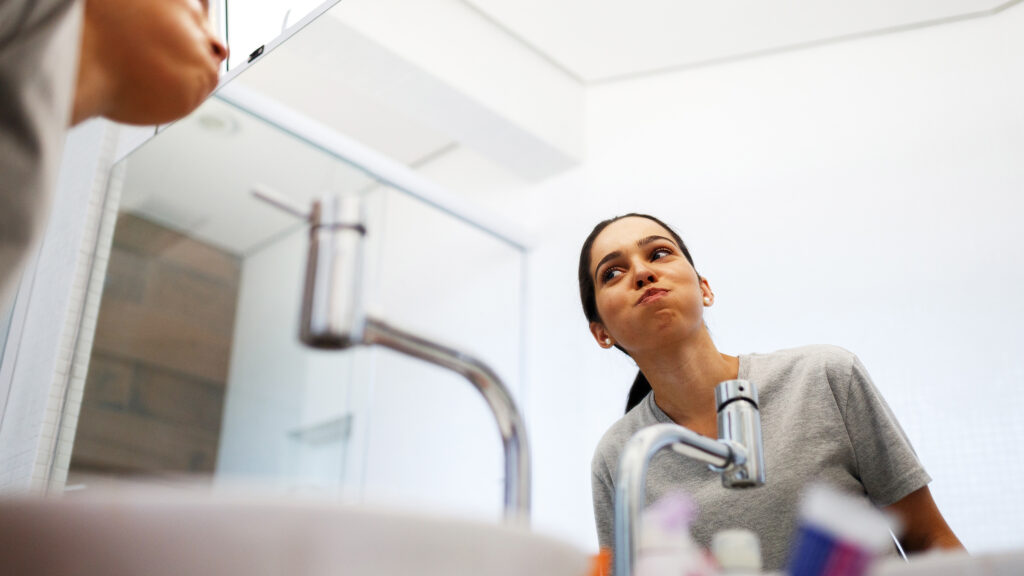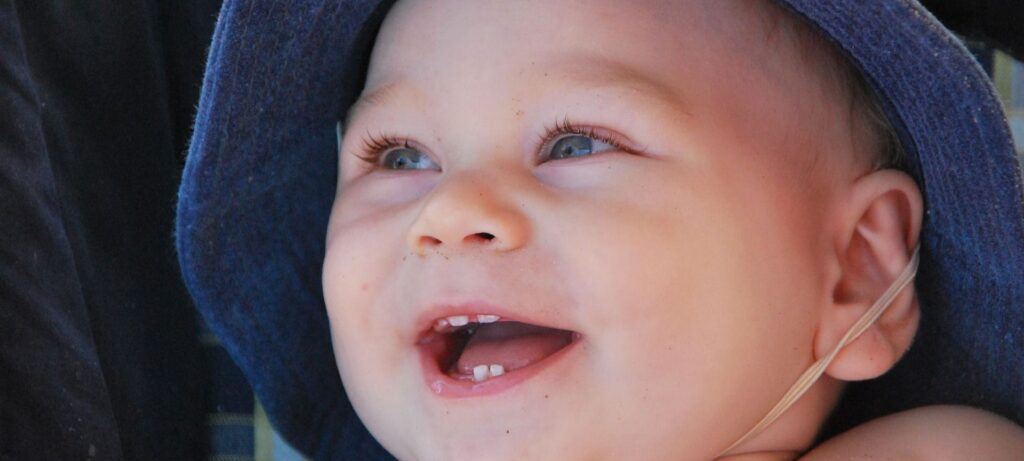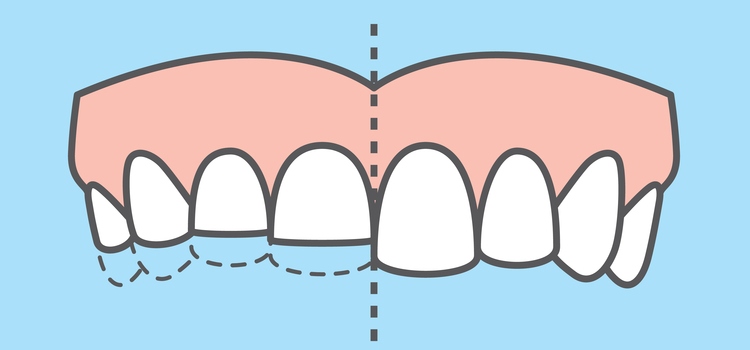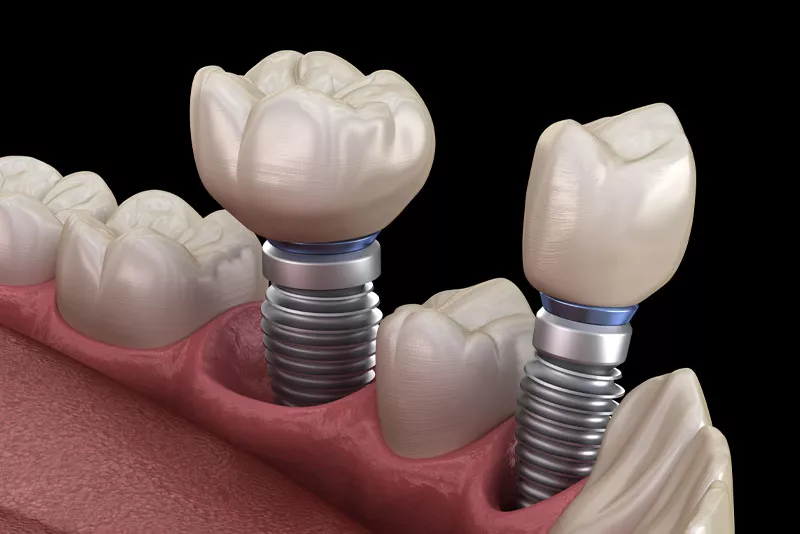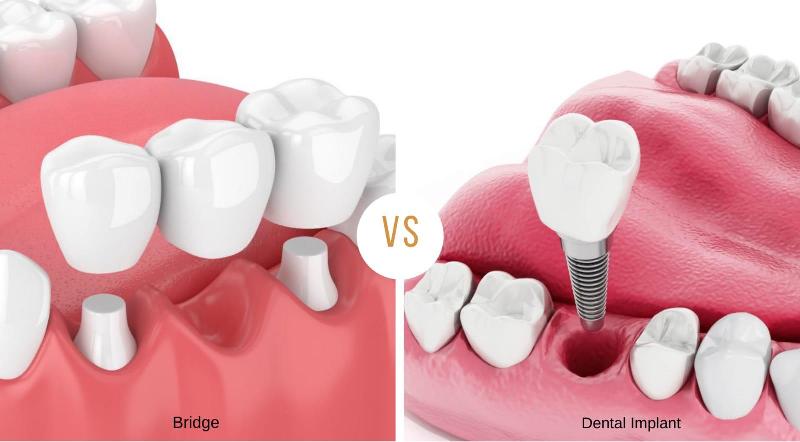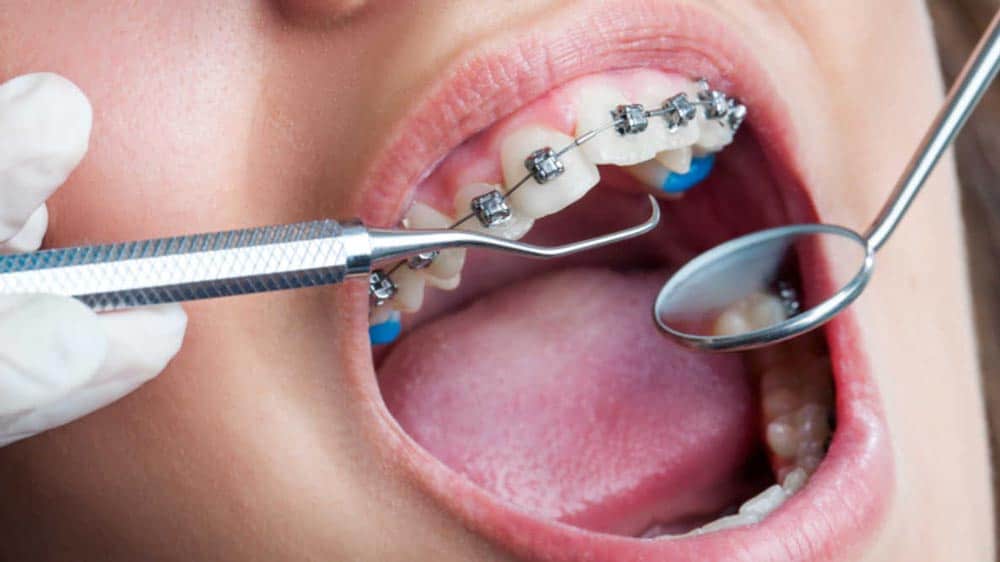
Braces, whether they’re a necessity or a personal choice, are a substantial investment in getting a beautiful smile. While you are undergoing your orthodontic treatment, it can be challenge to keep your teeth clean and maintain optimal oral hygiene health.
Ensuring that your teeth and gums stay healthy while you are wearing your braces requires special attention and a tailored approach to dental care. But can you actually get your teeth cleaned with braces?
The answer is a big yes, it is possible to get your teeth cleaned even when you have braces. In fact, maintaining good oral hygiene is especially important during orthodontic treatment to prevent tooth decay and gum problems.
In the rest of this article, we will explore how a dentist can help to keep a patient’s teeth clean and healthy even with braces. We will also provide practical tips on how to keep your teeth clean on your own, as well as the tools that can make the process easier and more effective. From brushing techniques to the use of special interdental brushes, from the intricacies of flossing to regular dental cleanings, we’ll cover everything you need to know.
What Are Braces?
Braces are orthodontic devices used to align and straighten teeth, improve dental health, and correct various dental issues. They consist of various components that work together to gradually shift the position of the teeth to its desired position. Braces are typically recommended by orthodontists to address issues such as overcrowding, gaps between teeth, overbites, underbites, crossbites, and other malocclusions (misalignments).
There are several types of braces, including:
- Traditional Metal Braces: These are the most common type of braces. They consist of metal brackets that are attached to each tooth, linked by wires and tiny rubber bands. Modern brackets are smaller and less noticeable than the notorious “metal-mouth” braces many adults remember.
- Ceramic Braces: These work like traditional braces, but the brackets are made from a clear, transparent ceramic material that blends in with the teeth, making them less visible.
- Lingual Braces: These are similar to traditional metal braces, but the brackets and wires are placed on the inside of the teeth, making them less noticeable.
- Self-Ligating Braces: These braces use clips instead of elastic bands to keep the wire in place. This reduces friction, makes the braces easier to clean, and might reduce the time needed in braces.
- Clear Aligners: These are a series of clear, custom-fit removable mouth trays that apply pressure to your teeth to move them into a desired position. They’re less noticeable than traditional braces and can be removed for eating, brushing, and flossing. However, clear aligners like Invisalign are only for patients with mild orthodontic issuses.
Orthodontic treatment with braces typically spans several months to a few years, depending on the severity of the dental issues being addressed. After the braces are removed, most patients will need to wear a retainer for some time to keep their teeth from shifting back to their original position.
How Do Dentist Clean Teeth With Braces?
As mentioned, you can still get your teeth cleaned by a dentist even with your braces. Dentists and dental hygienists have specific techniques and tools to effectively clean teeth with braces. While the presence of braces can make cleaning more challenging, dental professionals are trained to navigate around the brackets and wires to ensure a thorough cleaning.
You may be interested in: Coconut Oil for Teeth Whitening. Why and How It Works?
Here’s an overview of the process:
- Pre-cleaning inspection: The dental professional will first examine your teeth and braces to check for any loose brackets, broken wires, or other issues that might need to be addressed during the cleaning.
- Removing plaque and debris: Using a gentle air-water spray, the dental hygienist will remove any loose food particles and debris from around the brackets and wires.
- Ultrasonic scaling: The dental hygienist may use an ultrasonic scaler, which uses high-frequency vibrations to gently remove plaque and tartar buildup around the teeth and braces. The scaler is carefully maneuvered around the brackets and wires to avoid causing any damage.
- Hand scaling: The dental hygienist might also use hand-held scaling instruments to remove any remaining plaque or tartar. These instruments are designed to access hard-to-reach areas—between brackets and teeth, and under wires—and clean around braces without damaging them.
- Polishing: After all the plaque and tartar are removed, the dental hygienist will polish your teeth using a specialized toothpaste-like polishing compound and a rotary instrument called a prophy cup or brush to polish the tooth surfaces. They will be extra cautious around the brackets and wires to prevent any damage.
- Fluoride treatment: To strengthen the teeth and provide added protection against tooth decay, the dental professional may apply a fluoride treatment. This may be in the form of a gel, foam, or varnish. Fluoride helps remineralize the tooth enamel, making it more resistant to acid attacks and decay.
Throughout your orthodontic treatment, you are required to attend follow-up appointments with your orthodontist to ensure that the teeth are moving as desired. During then, your orthodontist may conduct dental cleaning to clean up areas of the teeth that have a buildup of plaque.
Throughout the cleaning process, the dental professional will provide guidance on proper oral hygiene techniques and answer any questions you may have about cleaning your teeth with braces. Remember, regular dental check-ups and professional cleanings are crucial for maintaining oral health while wearing braces.
How Do I Clean Teeth With Braces at Home?
Apart from professional cleaning, daily oral hygiene is important to ensure a clean and healthy teeth throughout your orthodontic treatment. Cleaning your teeth with braces requires a little extra effort and attention to ensure that you maintain good oral hygiene.
Here are some tips on how to clean your teeth effectively with braces:
- Rinse Your Mouth: Start by rinsing your mouth with water to loosen food particles that may be caught in and around your braces.
- Brush Your Teeth: Using a soft-bristled toothbrush or an orthodontic toothbrush, brush at a 45-degree angle to the gums. Make sure to clean each tooth individually, and pay attention to the nooks and crannies around the brackets and wires. You should spend at least two minutes brushing your teeth.
- Use an Interdental Brush: An interdental brush, also known as a proxabrush, is a small brush that can clean between braces where a regular toothbrush can’t reach. Insert the brush between the wires and move it in a circular motion to dislodge food particles and plaque that may be stuck between the teeth and around the brackets.
- Flossing: Flossing with braces can be challenging, but it’s an essential step to remove plaque buildup. Use a floss threader or orthodontic floss to thread the floss under the main wire of your braces. Gently move the floss between your teeth, making sure to clean along the gum line. Use a fresh section of floss for each tooth. Be gentle to avoid damaging the wire
- Use a Water Flosser: Consider using a water flosser or oral irrigator, which uses a stream of water to remove food particles and plaque. Aim the stream of water between your teeth and along the gumline to effectively clean around the brackets and wires. It can be a helpful addition to your oral hygiene routine.
- Rinse Again: After you’ve finished brushing and flossing, rinse your mouth again with water, or an antibacterial or fluoride mouthwash if your dentist recommends it.
- Check Your Teeth and Braces: Look closely at your teeth and braces in the mirror to ensure that they are clean and there’s no food particles remaining.
Remember to clean your teeth and braces after every meal and snack, if possible. Keeping your teeth clean while wearing braces might seem time-consuming, but it is crucial to prevent the onset of tooth decay and gum disease!
Takeaway
In conclusion, maintaining stellar oral hygiene while wearing braces might seem daunting, but it’s a crucial part of your journey towards a healthier, straighter smile. Having braces doesn’t mean compromising on a clean and healthy smile.
In this article, we will explored the ins and outs of getting your teeth cleaned with braces, whether it is by your dentist at the clinic, or yourself at home. From mastering the art of brushing and flossing with braces, to understanding the importance of regular dental cleanings, you now have the knowledge to protect your teeth from plaque, tartar, and potential dental issues.
With the tips and techniques discussed in this article, you are well-equipped to face the challenges that comes during your orthodontic treatment!
